- Home
- TV History
- Network Studios History
- Cameras
- Archives
- Viewseum
- About / Comments
Skip to content
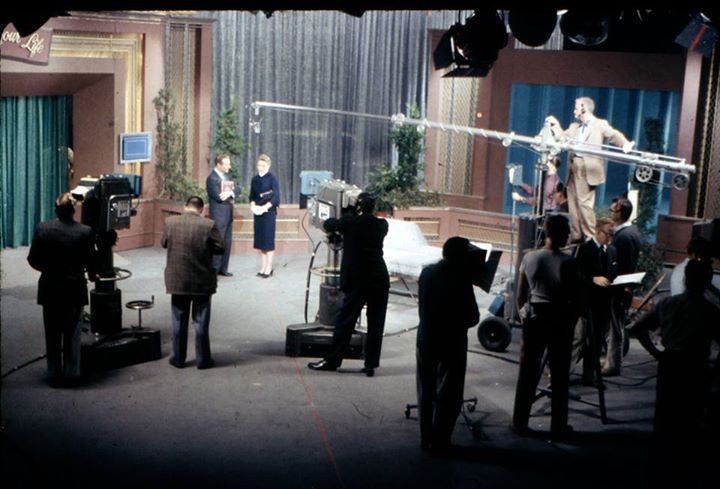



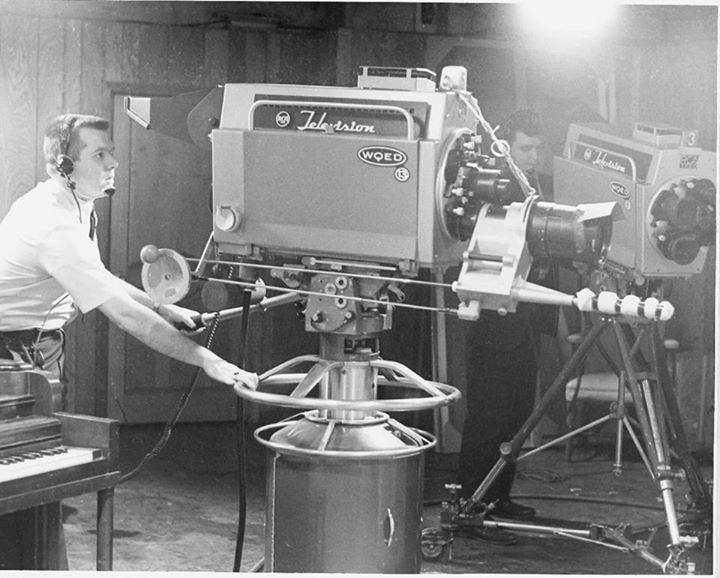



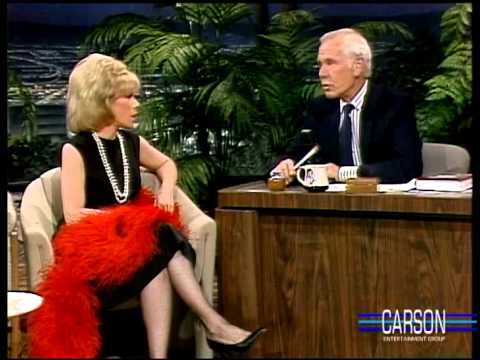



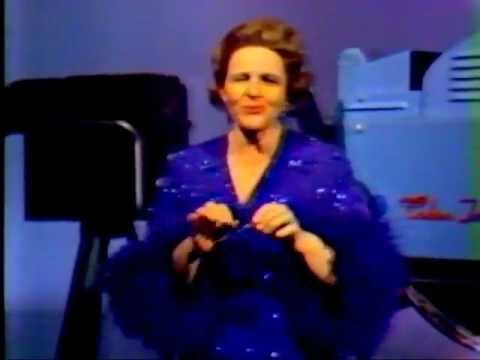



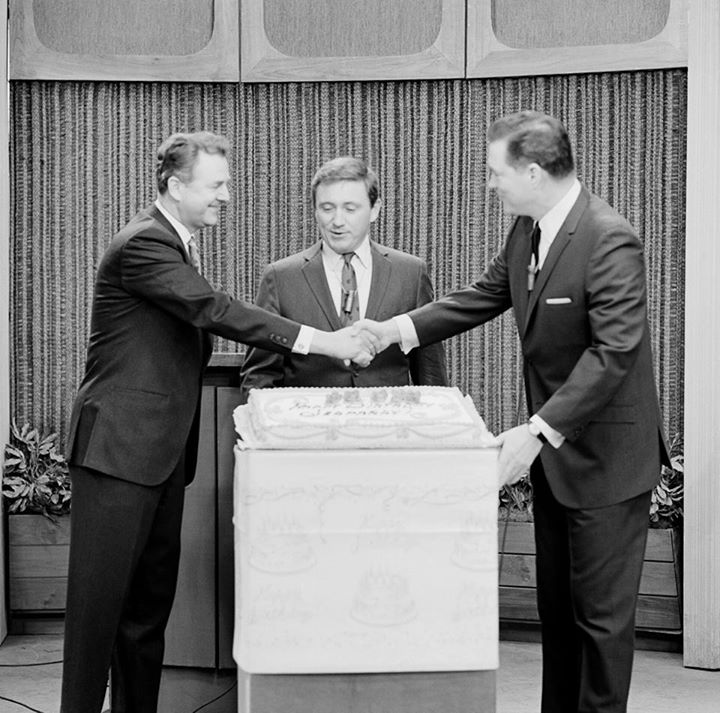









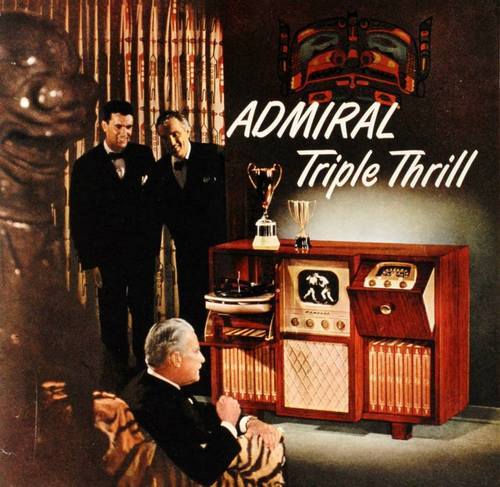







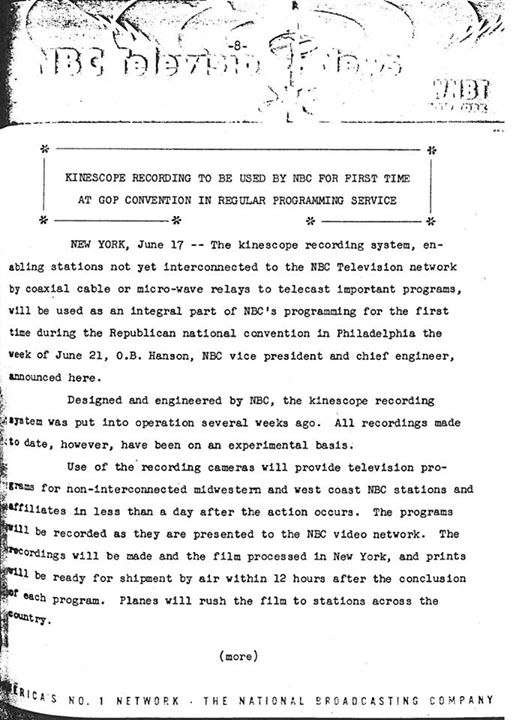





Posts in Category: TV History
Page 86 of 136
« Previous
1
2
3
4
5
6
7
8
9
10
11
12
13
14
15
16
17
18
19
20
21
22
23
24
25
26
27
28
29
30
31
32
33
34
35
36
37
38
39
40
41
42
43
44
45
46
47
48
49
50
51
52
53
54
55
56
57
58
59
60
61
62
63
64
65
66
67
68
69
70
71
72
73
74
75
76
77
78
79
80
81
82
83
84
85
86
87
88
89
90
91
92
93
94
95
96
97
98
99
100
101
102
103
104
105
106
107
108
109
110
111
112
113
114
115
116
117
118
119
120
121
122
123
124
125
126
127
128
129
130
131
132
133
134
135
136
Next » Rare Indeed! The Color Photo + The Video! ‘This Is Your Life’
On April 2, 2014
- TV History
Rare Indeed! The Color Photo + The Video! ‘This Is Your Life’
http://www.youtube.com/watch?v=de00c3ggHLw
http://www.youtube.com/watch?v=OqhLOhLruQI
Thanks to Jim Early’s father, who took this from the audience, we see ‘This Is Your Life’ host Ralph Edwards with guest Francis Farmer on January 29, 1958. This show started in 1952 at NBC’s Radio City West at Sunset and Vine, but by now, had probably moved to Burbank. Parts 1 and 2 of the show are at the links above. Francis Farmer’s story is tragic and was the subject of several book and movies. Jessica Lange played Farmer in the 1982 film, ‘Frances’, for which she was nominated for an Academy Award for Best Actress, and Kim Stanley was nominated for an Academy Award for Best Supporting Actress for her portrayal of Farmer’s mother.


Behind the scenes at NBC Burbank, 1963 With TK60s
On April 2, 2014
- TV History
Speaking Of Bob Hope…NBC Burbank Studio 1, Behind The Scenes
Short but sweet. Here is a 2 minute video clip from what I think is the beginning of an episode of ‘Bob Hope Presents The Chrysler Theater’ from 1963. We’ll see great shots of Studio 1 (Carson’s home base) and oddly, a TK60 with a TK41 behind it.
Studios 1 and 3 are next to each other in the front of the building (the two original studios) and 2 and 4 were on the right side of the building. 1 and 3 were built as black and white studios (for later color conversion) and 2 and 4 were built as color studios. I think by ’63, Studio 3 had gone color, leaving 1 as a black and white studio.
I think the TK60 scene actually inside Studio 3 and is being taken with a Studio 1 TK60 (next door) for live insert. I don’t know why, but maybe the Studio 1 opening had a lot of intense set changes that made it necessary. I don’t know how else to explain it. do you?
This ‘Bob Hope Presents The Chrysler Theater’ show ran from ’63 till ’67 inside various formats. Usually, Hope introduced the show which was either a video tape or film drama anthology type presentation and was paid $25,000 for the intro. Other versions include ‘Chrysler Presents A Bob Hope Special’ in which Bob starred with guests and was paid $500,000 to produce. To save money, Hope usually opted for a black and white show, unless NBC was pressing him for a color show, which they began doing in ’64.
http://aliquippa.tumblr.com/post/34261758536/behind-the-scenes-at-nbc-burbank-1963
Aliquippa • Behind the scenes at NBC Burbank, 1963.
Behind the scenes at NBC Burbank, 1963.
Happy Birthday WQED TV…Born April 1, 1954
On April 1, 2014
- TV History
Happy Birthday WQED TV…Born April 1, 1954
WQED was the first community-sponsored television station in the United States as well as the fifth public television station. They were the first station to telecast classes to elementary school classrooms when Pittsburgh launched the Metropolitan School Service in 1955. WQED has been the flagship station for ‘Mister Rogers’ Neighborhood’ and ‘Where in the World Is Carmen Sandiego?’. Below is a nice shot from the 1960s of a WQED RCA TK60 with a Zoomar outboard lens created for the TK60 and Marconi Mark IV, which both had turret mounted auto iris hubs in the center of the turret making the side mount necessary.


Studio 6B…Time Lapse Remodeling For ‘Tonight’ Return To NYC
On April 1, 2014
- TV History
Studio 6B…Time Lapse Remodeling For ‘Tonight’ Return To NYC
If you look closely, you can see that at the start, the column that was forever behind Carson’s homebase set is still there, but not for long. You can see the side entrance and back stage scenery doors being widened too. A busy bee hive with a great result! Thanks to Caz Bielen for bringing this clip to our attention.


1986 Joan & Johnny Remember Her Debut
On April 1, 2014
- TV History
Joan Rivers Follow Up…1986 Joan & Johnny Remember Her Debut
Joan’s first ‘Tonight’ appearance was February 17, 1965…exactly 49 years later to the day, she made a cameo appearance on the debut of ‘The Tonight Show Starring Jimmy Fallon’. In this clip from ’86, she and Johnny discuss those early days. Here you get a feel for her material, that is still quite similar as you can see in today’s earlier post of her first appearance as a guest since Carson banished her 28 years ago for not telling him about her Fox show, while still a guest host for him.
http://www.youtube.com/watch?v=-lEX6HI4Mew
Joan Rivers and Johnny Carson reminisce about their early careers and she tells hilarious jokes about the Royal Family and Madonna’s wedding. Joan Rivers dis…


Hang Onto Your Hat! Joan Rivers Returns To ‘Tonight’!
On April 1, 2014
- TV History
Hang Onto Your Hat! Joan Rivers Returns To ‘Tonight’!
In case you missed it, here’s Joan’s return that’s almost “too hot to handle”. The pro that he is, Jimmy handles this with grace (and a red face). The band and Russel Crowe, not so much…they’re in hysterics. This is true must see TV! After 28 years of banishment, it’s good to see her back again.
https://www.youtube.com/watch?v=srtES-HebG0
Jimmy welcomes Joan Rivers, who made her first appearance on The Tonight Show 49 years ago, and Joan explains why she was a little late. Subscribe NOW to The…


The Great Kate Smith…Some Unusual Video Clips
On March 31, 2014
- TV History
The Great Kate Smith…Some Unusual Video Clips
In two of these, she performs with cameras as props, including a TK41. In the third…a real rarity, Jackie Gleason conducts the orchastra as Kate sings his theme song “Melancholy Serenade” which he also wrote. FYI, these are not from her NBC days, but from the early 60s when she had a show on CBS. The color clip with a real TK41 (and a fake TK11) is from a 1969 Screen Gems special which was shot at NBC as you can tell by the NBC exclusive sound baffle mod on the top of the small high voltage door. Enjoy!
http://www.youtube.com/watch?v=aU-LCbNhULg (color)
http://www.youtube.com/watch?v=JMGp6Cfa1Jk (CBS TK30)
http://www.youtube.com/watch?v=3rpYzWxam8o (Gleason)
Songs include: I’ll Be Seeing You / Fine and Dandy / How Deep is the Ocean / The Last Time I Saw Paris / Please Don’t Talk About Me When I’m Gone / Didn’t We…
Me And Rosie…My RCA TK41C
On March 30, 2014
- TV History
Me And Rosie…My RCA TK41C
November 16, 2006 was one of the happiest days of my life. On that day, I finally had an RCA TK41 of my very own. I think I had wanted one of these since 1961 when I was 11 years old and just becoming fascinated with television. If you want to know why I named her Rosie, just click on the link below. Enjoy and share.
A Game Show Debut 50 Years Ago Today? What is Jeopardy!?
On March 30, 2014
- TV History
A Game Show Debut 50 Years Ago Today? What is Jeopardy!?
Below left is a very rare photo of Jeapordy’s first birthday. Bringing the cake is creator Merv Griffin. On the left, announcer Don Pardo is shaking hands with host Art Fleming (who bears a striking resemblance to Hugh Downs). On the right, a shot of the game in play from the early 70s. I think the show started in 8G and later moved to 6A.
The original daytime version aired on NBC from March 30, 1964 to January 3, 1975, then spawned a weekly nighttime syndicated edition that aired from September 9, 1974 to September 5, 1975, and was later revived as ‘The All-New Jeopardy!’, which ran from October 2, 1978 to March 2, 1979. The program’s most successful incarnation is the daily syndicated version, which premiered on September 10, 1984.
Both NBC versions and the weekly syndicated version were hosted by Art Fleming. Don Pardo served as announcer until 1975, and John Harlan announced for the 1978–79 show. Since its inception, the daily syndicated version has featured Alex Trebek as host and Johnny Gilbert as announcer. Trebek is expected to retire from the program in 2016, at which point his tenure as host will have lasted for 32 years.
With close to 7,000 episodes aired, the daily syndicated version of Jeopardy! has won a record 30 Daytime Emmy Awards and a Peabody Award. Game Show Network (GSN) ranked the show number 2 on its 2006 list of the 50 greatest game shows, and TV Guide ranked it number 1 in its 2013 list of the 60 greatest game shows ever. The program has gained a worldwide following with regional adaptations in many foreign countries. The 30th season of the daily syndicated version of Jeopardy! premiered on September 16, 2013. Thanks to David Schwartz and Glenn Mack for the photos.
NBC Studios Thumbnail List
On March 29, 2014
- TV History
For You To COPY & PASTE…NBC Studios Thumbnail List
Many have asked for this and I wish I could post the PDF version, but Facebook won’t do PDF files. The best way I know to save this is to copy it and paste it into either an email to yourself, or into Corel or Microsoft Word document. Enjoy and share.
NBC Television, New York:
Radio City Studios & Theaters 1935 -1956
This is the first ever, known, chronological listing of the conversions of NBC’s Radio City studios. Included in this exclusive Eyes Of A Generation time line, are the outside performance theaters and their conversion dates to NBC Television theaters. This compilation gives us the clearest and most concise guide yet to the production and technical operations of television’s early days and the network that pioneered so much of the new medium.
As we have only recently learned, many shows were done as “remotes” in NBC radio studios with in-house mobile camera units, and predate the official conversion date which signifies when each studio had a major overhaul to install lights and control rooms.
For instance, it is known that ‘The Voice Of Firestone’ was telecast locally from 8H as early as 1943. It was first seen on the NBC Television Network in April 1944 and continued occasionally until January 1947 as an in-house remote as 8H was not converted till 1950, and with the size of the orchestra and audience, that was NBC’s only studio big enough to handle the show.
Eyes Of A Generation, would like to offer a huge thanks to the many past and present NBC people that helped, but most especially to Frank Merklein (NBC 1947-1961) Joel Spector (NBC 1965-2001), Dennis Degan (NBC 2003 to present), historian David Schwartz (GSN) and Gady Reinhold (CBS 1946 to present) for their first hand knowledge and help. Bobby Ellerbee
1st Television Facility and 1st Studio Converted
Studio 3H…1935 (Became 3K September 12, 1955):
3rd Floor, 30 Rockefeller Plaza
(Converted from Iconoscope cameras to Image Orthicon summer of 1946)
2nd Television Facility
Studio 5F… Film/Telecine 1936 : 5th Floor, 30 Rockefeller Plaza
2nd Conversion and 2nd Studio
Studio 8G…April 22, 1948 : 8th Floor, 30 Rockefeller Plaza
(First broadcast May 9, 1946 when it was still a radio studio, show was ‘Hour Glass’)
3rd & 4th Conversion and 3rd & 4th Studios
Studios 3A and 3B… Summer of 1948 : 3rd Floor, 30 Rockefeller Plaza
(3B used before 3A. ‘You Are An Artist’ with Jon Gangy, and ‘Television Screen Magazine are possibly the first shows from 3B in November of 1946)
5th Conversion and 5th Studio
Studio 6B… June 8, 1948 : 6th Floor, 30 Rockefeller Plaza
(First broadcast June 8, 1948, ‘Texaco Star Theater’)
6th, 7th & 8th Studios
Uptown Studios December 1948 : 105 E 106th St
(NBC announced the Dec 48 opening in a “year end wrap up” press release)
9th Studio
International Theater…January 29, 1949 : 5 Columbus Circle
Debuted January 29, 1949 with ‘Admiral Broadway Review’
6th Conversion and 10th Studio
Studio 6A…May 29, 1950 : 6th Floor, 30 Rockefeller Plaza
(First use December 24, 1948, fifteen minute simulcast ‘Chesterfield Supper Club’ with Perry Como)
7th Conversion and 11th Studio
Studio 8H…January 30, 1950 : 8th Floor, 30 Rockefeller Plaza
(November 29, 1943, ‘Voice Of Firestone’, covered as a remote with Iconoscope filed cameras, local WNBT. NBC Television Network did April,1944 VOF remote here)
12th Studio
Hudson Theater… Sept 25 1950 : 145 W 44th Street
(First broadcast, ‘Kate Smith Show’ debuted Sept 25, 1950)
13th Studio
Center Theater…November 25, 1950 : 1230 Sixth Avenue
(Simulcast of ‘Voice Of Firestone’, new home debut after move from 8H for conversion)
14th Studio
New Amsterdam Theater…September 19, 1951 : 214 W 42nd Street
(First broadcast April 9, 1950, Bob Hope’s first NBC special covered as a remote. (NBC bought this from WOR who had used it for television.)
15th Studio
Colonial Theater…November 8, 1952 : 1887 Broadway
(‘Your Show Of Shows’, one time event November 8, 1952. First live use of NBC’s first color facility, no color burst on broadcast, back and white only except for closed circuit engineering loop. Historic colorcasts did not start till August 30, 1953.
16th Studio
NBC 67th Street Studios (A, B, C, D) 1953-1961 : 101 West 67th Street
(First use, WNBT’s local broadcast, ‘Steve Allen Show’ fall of 1953, pre ‘Tonight’)
17th Studio
Studio 5H…December 1953 (Control Center) : 5th Floor, 30 Rockefeller Plaza
(Built for use as an assignable control room and ingest of feeds from multi remotes)
18th Studio
NBC Brooklyn Studio 1… November 12, 1954 : 1268 East 14th Street
(First use, ‘Satin And Spurs’ color spectacular starring Betty Hutton)
19th Studio
The Century Theater…June 1, 1954 : 932 Seventh Avenue at West 58th Street
(Broadcasting Magazine date. First show may have been ‘Mr. Peepers’. First known broadcast was October 2, 1954 with debut of ‘Imagine Coca Show’ here.)
20th Studio
Zeigfeld Theater…Sept 22, 1956 : 1347 Sixth avenue and 54th Street
(‘Perry Como Show’ debuts in color from this newly converted for television theater)
21st Studio
NBC Brooklyn 2…Fall 1956 : 1268 East 14th Street
(First use, ‘Ester Williams Aqua Spectacular’, November 29, 1956. The famous buried swimming pool, built just for this special was under floor of Studio I)


Bob Newhart Roasts Don Rickles
On March 29, 2014
- TV History
Just For Fun…Bob Newhart Roasts Don Rickles
It’s hard to believe that Don Rickles had any friends, but in real life, he and Newhart were indeed dear friends and, with their wives took many trips abroad. This is funny! Enjoy and share.
The History Of Clarabell In A Nutshell
On March 29, 2014
- TV History
The History Of Clarabell
Even after all these years, this picture is still a shocker for all of us that grew up watching ‘Howdy Doody’. To see Clarabell (Bob Keeshan) taking off his makeup is like “seeing mommy kissing Santa Claus”. I can’t imagine what that little boy is thinking but feel fairly sure that he grew up to be a mass murderer ;>).
Being born in 1950, the only Clarabell I would have seen would have been Lou Anderson who played the roll from ’54 till the sign off September 24, 1960. I remember I cried when Clarabell said ‘Goodbye kids’.
Between Keeshan, who left in ’52 and Anderson, was Robert “Nick” Nicholson, who also supplied the voice of Cornelius J. Cobb. Both Anderson and Nicholson were jazz musicians.
Our friend Frank Merklein who was a cameraman on the show, from the first day till the last, told me how Keeshan came to be Clarabell. Although the show debuted December 27, 1947 in 3H as ‘Puppet Playhouse’, Clarabell did not become a character till a few weeks later when the show changed it’s name to ‘Howdy Doody’, which is also when Smith started wearing his Buffalo Bill inspired wardrobe.
Keeshan was the NBC page assigned to the show and had a habit of using hand signals he had picked up the service. Smith quickly realized he needed a sidekick but there was no money for another speaking role so he hired Keeshan to be his “silent partner”. After a few days as Clarabell, Keeshan came up with the idea of a belt box with two horns, one for yes and one for no. The rest, as they say, is history.
Whether Keeshan was let go or quit remains a mystery as there are several versions, but by September 21, 1953, Keeshan was back on the air on WABC-TV, in a new children’s show, ‘Time for Fun’. He played Corny the Clown, and this time he spoke. Later that same year, in addition to Time for Fun, Keeshan began ‘Tinker’s Workshop’, a program aimed at preschoolers, with him playing the grandfather-like Tinker.
Developing ideas from ‘Tinker’s Workshop’, Keeshan and his long-time friend Jack Miller submitted the concept of ‘Captain Kangaroo’ to the CBS network, which was looking for new approaches to children’s television. CBS approved the show, and Keeshan starred as the title character when it premiered on CBS on October 3, 1955. The show was an immediate success, and he served as its host for nearly three decades leaving nine months shy of the 30th anniversary in December of ’84.
‘Snap Judgement’, NBC Studio 8H
On March 28, 2014
- TV History
‘Snap Judgement’, NBC Studio 8H…10, 11 & 12 of 12
Thanks to Bob Batsche, here are the final photos from ‘Snap Judgment’ hosted by Ed McMahon taken in early 1969. Above, we see the floor director in position with Ed at the helm. In the center is cameraman Peter Basil taking a look at the new Fairchild audio board. Bottom is the one and only Johnny Olson ready to announce.
Many thanks to Bob Batsche for the fifty of or so photos he has shared with us including the great color pictures from Apollo coverage, ‘The Match Game’, ‘The Doctors’ and ‘Snap Judgment’.
Behind ‘The Admiral Broadway Revue’ Debacle…
On March 28, 2014
- TV History
Behind ‘The Admiral Broadway Revue’ Debacle…
Yesterday, in discussing the history of NBC’s International Theater, we discovered that despite high ratings, Admiral had pulled the plug on it’s own ‘Admiral Broadway Revue’ starring Sid Caesar and Imogene Coca which debuted on January 29, 1949.
Out of curiosity, I dug a little deeper into Admiral and now I better understand their position. It seems that the show’s popularity had generated too much demand for their factory to keep up with. Admiral’s reputation was based on quality…not low prices and quantity. In order to maintain that quality, they took more time in crafting their lines of radio and televisions.
Below are two 1948 ads that show what we would now call a home entertainment center with a phonograph, a radio and what looks like a 12 or 14 inch television receiver. This unit was priced at around $390, which is equivalent to around $3,920 today.
Continental Radio and Television in Chicago was the maker of the Admiral band and to them, speeding up production meant sacrificing quality. To keep up with the demand the show had created, they would have had to build a new plant, but although doing well, were not willing to do that. The only other option was to pull the plug on the show.
Congratulations to Continental and Admiral! It’s not often that corporations take the high road of quality at their own expense. Admiral remained a top electronics brand until the flood of mass produced appliances from Japan hit in the late 1960s.
‘The Price Is Right’…Come On Down!
On March 27, 2014
- TV History
‘The Price Is Right’…Come On Down!
Late last year, we discovered that the cameras in CBS Television City Studio 33 are now wireless…no more cables there. An interesting experiment that seems to be working. This photo, sent by our friend David Mackey, shows Drew Carey’s ‘Dancing With The Stars’ professional dance partner Cheryl Burke as a guest model on the show. Notice the great extra program monitor and the blocking sheets on the camera. On each side are blocking sheets from a January 2001 edition of the show.
‘Snap Judgement’, NBC Studio 8H…7,8 & 9 of 12
On March 26, 2014
- TV History
‘Snap Judgement’, NBC Studio 8H…7,8 & 9 of 12
Thanks to Bob Batsche, here are more photos of a game show hosted by Ed McMahon taken in early 1969. Above, a photo that is almost a duplicate of one from ‘The Match Game’. We see cameras 2, 3 and 4 in place with the credit roll machine in the same place too. In the center, Art Graham wrestles a TK41 into place…according to Bob, that is the west wall so the set would be behind Art and camera 1 would shoot the host from the left side of the set (from the audience POV). The photo on the bottom is from the 8H control room and the smiling man is technical director Jack Irving.
‘Snap Judgement’, NBC Studio 8H…4, 5 & 6 of 12
On March 25, 2014
- TV History
‘Snap Judgement’, NBC Studio 8H…4, 5 & 6 of 12
Thanks to Bob Batsche, here are photos of a game show hosted by Ed McMahon taken in early 1969. On top, host Ed McMahon. In the center, three of the four cameramen take a break…L-R, Peter Basil, Art Graham and BJ Bjorkman. Bottom, cameraman Ken Winchester has his own folding break room at the camera one position shooting Ed.
To answer the question about reusing sets and flats…yep! Notice this piece of ‘Snap Judgement’ used to be a pieces of a dramatic presentation and is marked Cyrano. Probably from a 1962 ‘Hallmark Hall of Fame’ production with Christopher Plummer as Cyrano de Bergerac.
NBC Introduces Kinescope Recording…June 1948 Press Release
On March 25, 2014
- TV History
NBC Introduces Kinescope Recording…June 1948 Press Release
The Kinescope dominated TV recording for time delay in the early 1950’s. A Kinescope recorder was basically a special 16mm or 35mm film camera mounted in a large box aimed at a high quality monochrome video CRT. All things considered the Kinescope made high quality and respectable TV recordings. Most engineers called the process (“kine”) pronounced “kinney” for short.
The Kinescope was quite the clever device. It’s film camera ran at a speed of 24 fps. Because the TV image repeated at 60 fields interlaced (30 fps) the film had to move intermittently between video frames and then be rock steady during exposure. The pull-down period for the film frame was during the vertical interval of less than 2ms, something no mechanical contraption could do at the time.
Several manufacturers like RCA, Acme, General Precision, and Eastman Kodak found various ways around the problem by creating a novel shutter system that used an extra six frames of the 30 frame video signal to move the film. This action integrated the video half-images into what seemed like smooth 24fps film pictures. Of course, the kines were played back on air using RCA film chains running at 24fps so the conversion to film was complete and seamless.
Until videotape recorders made their debut in 1956, the Kinescope was the only way to transmit delayed television programs which were all shot on film.


NBC 6B, Nat King Cole Nexus of “Unforgettable’ Duet By Natalie
On March 25, 2014
- TV History
NBC 6B, Nat King Cole Nexus of “Unforgettable’ Duet By Natalie
Earlier I mentioned Nat King Cole’s ground breaking show from NBC’s 6B. Even with no sponsors due to “Madison Avenue’s fear of the dark”, NBC carried the show for over a year. In this clip, you will see the start of a project 33 years in the making. Here, Cole, an avid audiophile, records himself on audio tape and plays it back live while singing along on the second pass.
Nat’s daughter Natalie remembered this occasion and always wanted to do something similar. In 1990, she recorded his famous hit “Unforgettable” using Cole’s original voice tracks to come up with the record of the year. The multi media live performance she created for the song is as incredible as it is unforgettable.
Nat’s September 3, 1957 clip is the top link. Natalie’s live, crystal clear performance is at the bottom link. Enjoy and share!
http://www.youtube.com/watch?v=SJuWdJNamUk
http://www.youtube.com/watch?v=MKCyUe4syc4
American singer, songwriter, and jazz pianist. the first black musician to ever have a weekly radio and television show. The first episode of the Nat King Co…
Here’s Something You Don’t See Every Day…
On March 24, 2014
- TV History
Here’s Something You Don’t See Every Day…
While posting the Studio 3A and 3B story, I thought about our friend Frank Merklien (right) who worked with the author of the first hand story in that post, Frank Vierling. It’s not often that cameramen have their own pictures taken, but this is one of those rare times. This photo is actually Paul Wenchell’s first television appearance, two years before ‘The Paul Wenchell, Jerry Mahoney Show’ debuted on NBC. This shot was taken on the set of ‘Lights Out’ at NBC’s Uptown Studios (106 Street) September 23, 1949.
Page 86 of 136
« Previous
1
2
3
4
5
6
7
8
9
10
11
12
13
14
15
16
17
18
19
20
21
22
23
24
25
26
27
28
29
30
31
32
33
34
35
36
37
38
39
40
41
42
43
44
45
46
47
48
49
50
51
52
53
54
55
56
57
58
59
60
61
62
63
64
65
66
67
68
69
70
71
72
73
74
75
76
77
78
79
80
81
82
83
84
85
86
87
88
89
90
91
92
93
94
95
96
97
98
99
100
101
102
103
104
105
106
107
108
109
110
111
112
113
114
115
116
117
118
119
120
121
122
123
124
125
126
127
128
129
130
131
132
133
134
135
136
Next »